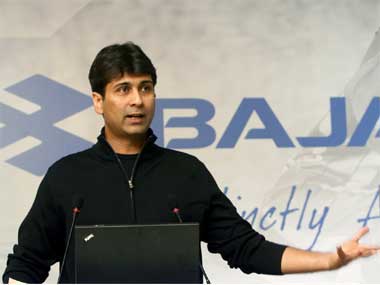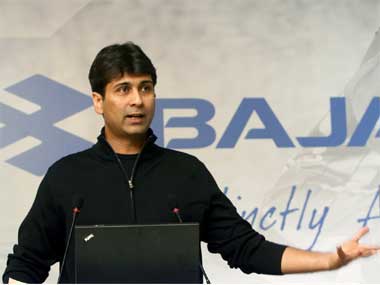His father made Bajaj Auto the world’s largest scooter company in the 1980s and 1990s. Bajaj became Hamara Bajaj. But Rajiv Bajaj closed that business down completely - perhaps to dad’s chagrin, and the mortification of seeing the scooter business grow at a faster clip with the entry of rival Honda. Today, he would would not shed tears even if the Bajaj name disappears from the two-wheeler consumer’s mind.
Reason: it’s the brand that matters, not the machine itself. The secret of Bajaj’s success now is a focus on creating brands, rather than several products.
Bajaj’s competitive edge, despite the loss of the company’s No 1 status more than a decade back, has been its consistent focus on ‘brands’ and ‘positioning’ for two-wheeler enthusiasts. And since he isn’t too happy about sharing the brand name ‘Bajaj’ with mixers, toasters and hair oil - products manufactured by other Bajaj family companies - he has decided to completely build his own brand.
[caption id=“attachment_1011969” align=“alignright” width=“380”]  Rajiv Bajaj. Reuters[/caption]
The man who put whispered “brands” into Rajiv Bajaj’s ears some years ago is Jack Trout, says a story in The Economic Times Corporate Dossier supplement (Read here).
Trout, along with Al Ries, was the author of the path-breaking book, “Positioning: The battle for your mind”, whose primary idea is that brands have to stand for one or two things in the consumer’s mind, and trying to be too many things to too many people is the way to marketing disaster. Ries and Trout also blast the idea of mindless line extensions, where one brand name - say Bajaj - is used for every product, never mind what the original brand stands for.
Thanks to Trout’s tutelage, the man behind the Pulsar bike’s marketplace success knows a thing or two about branding. He can probably stand in for Trout, if required.
Impact Shorts
More Shorts“I didn’t understand the true meaning of brand until I met Trout, Bajaj tells the Economic Times Corporate Dossier. The ET report unravels the guru-shishya relationship between Trout and Bajaj.
Bajaj swears by Jack Trout and Al Ries’ book,“Positioning: The Battle for Your Mind”.
According to Trout’s theory, positioning helps create an image for a product or brand or even company. How the potential customers perceive a product is very important.
In his book, Trout and Ries write, “position a follower so that it can occupy a niche not claimed by the leader; and, avoid letting a second product ride on the coattails of an established one.” The strategies they give for brands are: Use present position to best advantage; choose the best name for your product; determine when - and why - less is more; and, analyse recent trends that affect your positioning.
And that’s precisely what Bajaj has been doing.
Rajiv Bajaj has completely thrown away the idea of his father Rahul’s business of scooters that once ruled India. He has built his own brand Pulsar and is not willing to step out of the motorcycle world. “We are a specialist motorcycle company; we won’t venture out of that easily.”
However, Bajaj and Trout are yet to crack a vexing problem - managing Bajaj, the family brand. “It has been extended to too many products, Trout says. Bajaj agrees. He believes that the family brand has been line extended to so many businesses that may confuse consumers. “The confusion is that I have invested a lot of money and effort in the name Bajaj, I am investing in a brand that I do not really own or control,” he says.


)

)
)
)
)
)
)
)
)



